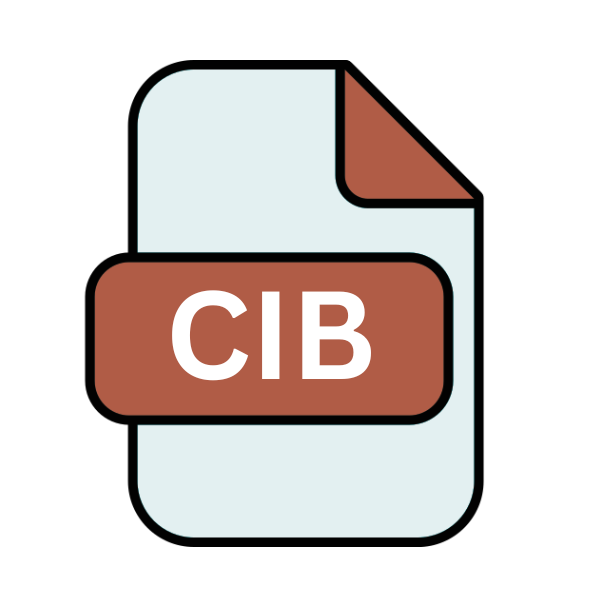.CIB File Extension

Micro-Cap Schematic
| Developer | Spectrum Software |
| Popularity | |
| Category | CAD Files |
| Format | .CIB |
| Cross Platform | Update Soon |
What is an CIB file?
In the realm of digital technology, file extensions play a crucial role in defining the format and functionality of various data files.
One such extension is .CIB, which stands for Luminaire Data File. Luminaire data files are specifically tailored for the storage and organization of information related to luminaires, which are lighting fixtures used in various settings such as residential, commercial, and industrial spaces.
The .CIB extension denotes a standardized format for storing luminaire data, allowing for seamless exchange and compatibility across different software applications and platforms.
More Information.
The history of the .CIB file extension dates back to the evolution of lighting design software in the late 20th century.
As CAD technology gained prominence in the architectural and engineering fields, lighting designers sought efficient ways to incorporate luminaire data into their design workflows.
Initially, proprietary formats were prevalent, leading to compatibility issues and data inconsistencies between different software platforms.
Recognizing the need for a standardized approach, industry stakeholders collaborated to develop the .CIB format under the auspices of organizations such as the Illuminating Engineering Society (IES) and the International Organization for Standardization (ISO).
The primary purpose of the .CIB file extension was to provide a universal container for storing essential luminaire data, including photometric information, electrical specifications, dimensional parameters, and mounting details.
Origin Of This File.
The .CIB file extension traces its origins to the lighting industry, where the need for a standardized format to store luminaire data became evident with the proliferation of computer-aided design (CAD) and lighting design software.
Developed to streamline the process of specifying and managing luminaire information, .CIB files emerged as a common solution adopted by lighting manufacturers, designers, and engineers alike.
File Structure Technical Specification.
The .CIB file format follows a structured schema designed to encapsulate various attributes and properties of luminaires in a systematic manner.
At its core, a .CIB file comprises metadata fields and data blocks, each serving a specific purpose in describing the characteristics of the luminaire.
Metadata fields typically include information such as the luminaire’s model name, manufacturer, catalog number, and relevant standards compliance.
Data blocks, on the other hand, contain detailed specifications such as photometric data (e.g., luminous intensity distribution curves, color rendering indices), electrical ratings (e.g., power consumption, voltage, current), mechanical dimensions, and installation requirements.
The technical specification of the .CIB file format may vary depending on the version and implementation, with newer iterations incorporating advancements in lighting technology and data interoperability standards.
Adherence to established norms ensures consistency and compatibility across different software platforms that support .CIB files.
How to Convert the File?
Converting a .CIB file to another format or vice versa typically involves using specialized software applications designed for lighting design, CAD (Computer-Aided Design), or data conversion.
While the exact steps may vary depending on the software you’re using. Here are some general guide on how to convert .CIB files:
1. Identify Compatible Software: First, you need to find software that supports both the .CIB format and the desired output format. This could be lighting design software, CAD programs, or dedicated file conversion tools.
2. Open the Software: Launch the software application on your computer.
3. Import the .CIB File: Navigate to the “File” menu within the software and look for options such as “Import” or “Open.” Select the .CIB file you want to convert from your file system.
4. Choose Output Format: Once the .CIB file is loaded into the software, check if there’s an option to save or export the file in a different format. This could be another proprietary format used by the software or a common file format like .DWG (AutoCAD Drawing) or .PDF (Portable Document Format).
5. Select Conversion Settings (if applicable): Depending on the software, you may have the option to adjust conversion settings such as scale, units, or formatting preferences. Make any necessary adjustments before proceeding with the conversion.
6. Convert the File: After selecting the desired output format and any relevant settings, initiate the conversion process. This may involve clicking a “Save As” or “Export” button within the software.
7. Specify File Name and Location: Choose a name for the converted file and select the destination folder where you want to save it on your computer.
8. Confirm Conversion: Once the conversion is complete, the software may display a confirmation message or provide feedback on the process. Verify that the converted file meets your expectations and requirements.
9. Verify Output: Open the converted file using appropriate software to ensure that the conversion was successful and that the data is intact and accurately represented in the new format.
10. Save and Close: If satisfied with the converted file, save any changes and close the software application.
Advantages And Disadvantages.
Advantage:
- Standardization: By adhering to a common file format, manufacturers, designers, and specifiers can exchange luminaire data seamlessly without compatibility issues.
- Efficiency: .CIB files streamline the process of specifying luminaires, reducing errors and saving time for designers and engineers.
- Interoperability: Supporting software applications can import and export .CIB files, facilitating integration with various design and analysis tools used in lighting projects.
Disadvantage:
- Complexity: Understanding and manipulating .CIB files may require specialized knowledge of lighting design principles and software applications.
- Versioning: Compatibility issues may arise when dealing with .CIB files created using different versions or implementations of the format.
- Limited Scope: While .CIB files excel at storing luminaire data, they may not encompass all aspects of lighting design, such as environmental factors and human-centric lighting metrics.
How to Open CIB?
Open In Windows
You can open .CIB files on Windows by using compatible lighting design software or CAD programs. Some popular options include Dialux, Relux, and AGi32.
Simply launch the software, then go to the File menu and select Open to browse for the .CIB file you want to open.
Open In Linux
While native support for .CIB files in Linux may be limited, you can use Wine (a compatibility layer) to run Windows applications on Linux.
Install a compatible lighting design software or CAD program using Wine, then follow the same steps as you would in Windows to open the .CIB file.
Open In MAC
Similar to Windows, you can use compatible software applications to open .CIB files on macOS. Applications like Dialux and Relux offer macOS versions. After installing the software, launch it, then use the File menu to open the .CIB file.
Open In Android
Opening .CIB files directly on Android may be challenging due to the lack of compatible software. You can use remote desktop applications to access a Windows or macOS computer running compatible software, such as Dialux or Relux, and open .CIB files that way.
Open In IOS
As with Android, opening .CIB files directly on iOS devices may not be feasible due to software limitations. You can use remote desktop applications to access a Windows or macOS computer running compatible software, such as Dialux or Relux, and open .CIB files remotely.
Open in Others
For other operating systems or specialized environments, your options may vary. You can explore alternative software solutions, online file converters, or cloud-based platforms that support .CIB files.
You can consider using virtual machines or emulators to run compatible software on different operating systems.













